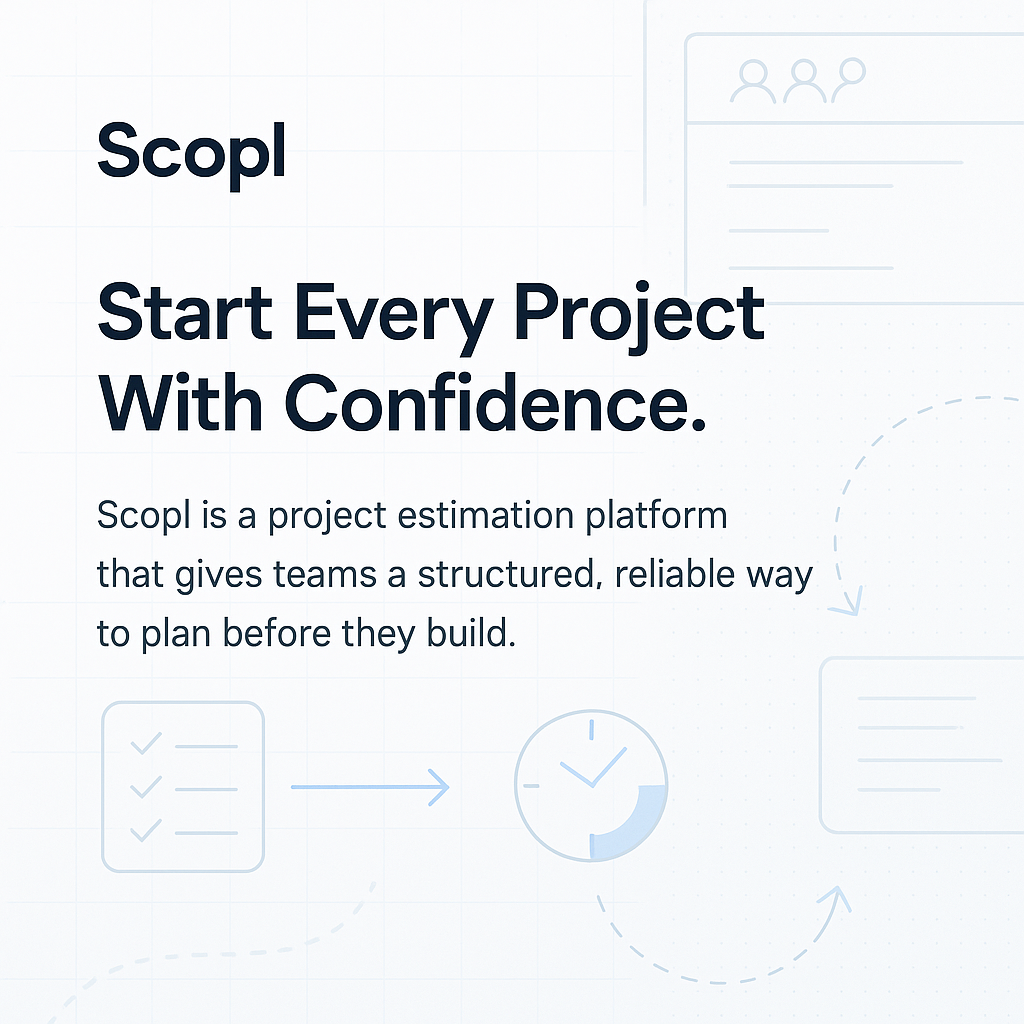When managing a project, understanding two key metrics—total estimated hours and critical path hours—is essential for accurate financial forecasting and timeline estimation. These two data points influence everything from resource allocation to profitability. In this article, we’ll break down how they interact and how using a structured estimation tool like Scop’l improves planning outcomes.
What Are Total Estimated Hours?
Total estimated hours represent the sum of all work hours projected for completing every task in a project. This includes both critical and non-critical activities, whether they are dependent on other tasks or not. It’s your bird’s-eye view of the full workload.
Why It Matters:
-
Forms the basis of cost estimations (labor being a primary expense in most projects)
-
Helps define resource needs and staffing requirements
-
Informs billing rates and pricing for clients or stakeholders
What Is the Critical Path?
The critical path is the longest sequence of dependent tasks that determines the minimum time to complete a project. If any task on this path is delayed, the whole project is delayed.
Critical path hours are the total estimated hours required to complete just these high-impact, time-sensitive tasks.
Why It Matters:
-
Determines your project’s earliest possible finish date
-
Helps prioritize essential resources and time management
-
Highlights high-risk areas where delays will affect the entire schedule
How Do These Metrics Impact Financial Estimates?
Cost Baseline Accuracy
-
The total estimated hours allow for a precise cost baseline, especially when multiplied by hourly rates or blended resource costs.
-
Overestimating can inflate budgets unnecessarily.
-
Underestimating can lead to budget overruns.
Risk-Based Contingency
Knowing which hours fall on the critical path helps assess risk-driven contingencies. You can financially buffer high-impact tasks while streamlining less critical ones.
Cash Flow Forecasting
By understanding the timing and sequencing of both total and critical path hours, finance teams can predict cash flow needs, especially in phased or milestone-based billing models.
Impact on Project Timelines
-
Total estimated hours give a broad understanding of the total effort and help set high-level deadlines.
-
Critical path hours, however, are the true drivers of deadlines. They identify the tasks that must stay on track to avoid project slippage.
-
By optimizing the critical path, teams can compress schedules or reallocate resources strategically to hit aggressive delivery goals.
Why This Makes A Difference
Scop’l starts every project with a standardized estimation framework. It helps teams:
-
Calculate total estimated hours across all roles and tasks
-
Identify and analyze critical path hours
-
Forecast timelines with built-in delay sensitivity
-
Align financial estimates with task-level granularity
Using Scop’l, project managers and stakeholders gain early clarity into how scope, schedule, and cost intersect—reducing surprises and increasing confidence.
Whether you’re managing software development, marketing campaigns, or construction schedules, understanding the interplay between total estimated hours and critical path hours is crucial. These numbers shape your budget and your timeline, and ignoring either can derail even the best-laid plans.
Scop’l ensures you never start a project blind. With clear estimation models and visualized critical paths, your team stays aligned, agile, and on-budget.

